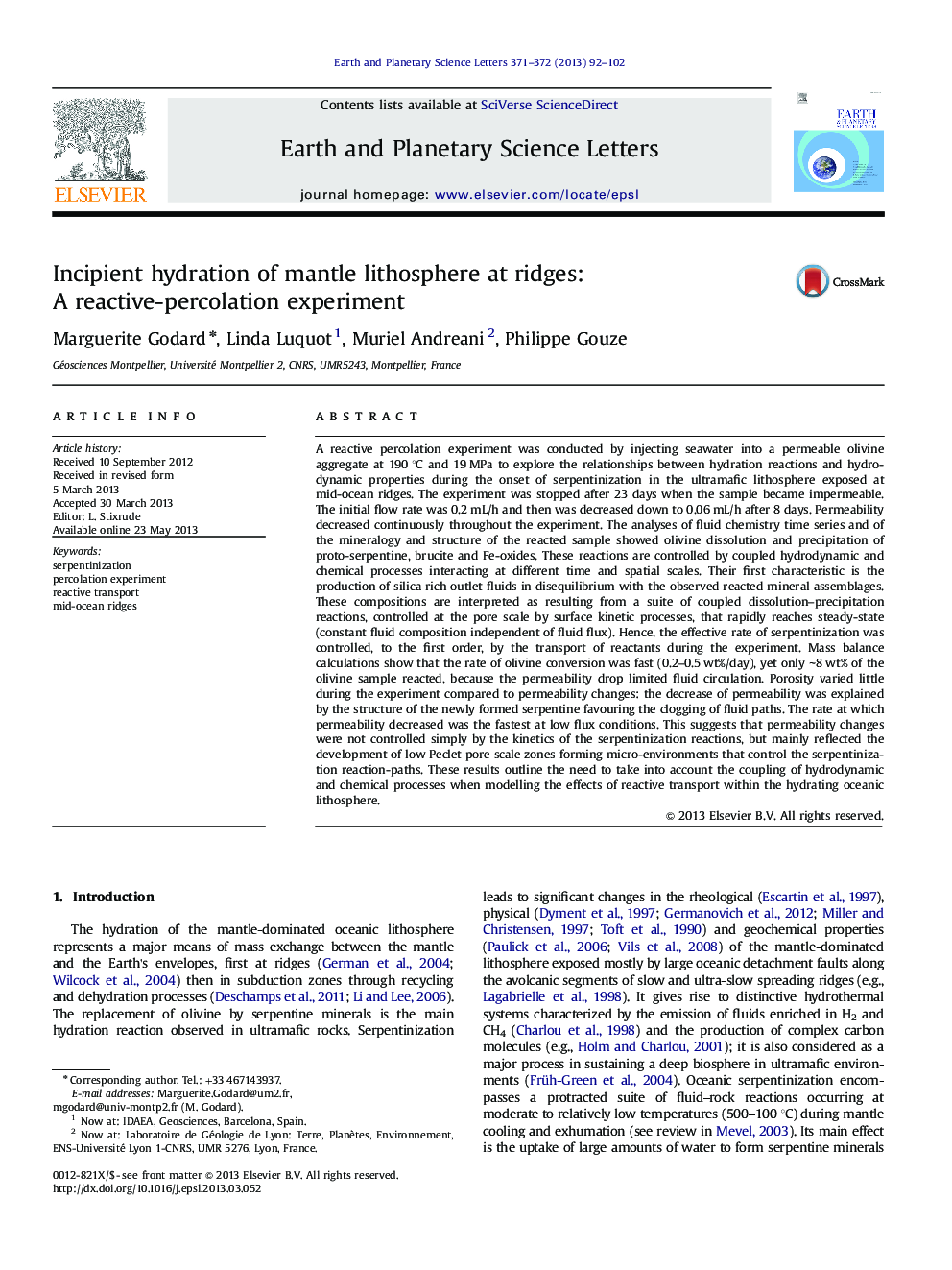| کد مقاله | کد نشریه | سال انتشار | مقاله انگلیسی | نسخه تمام متن |
|---|---|---|---|---|
| 4677214 | 1634783 | 2013 | 11 صفحه PDF | دانلود رایگان |
• Open-system olivine hydration by seawater produces fluids markedly enriched in silica.
• Effective rate of serpentinization in percolated media is controlled by fluid renewal.
• Incipient serpentinization induces permeability variations at constant porosity.
• Permeability variations are related to changes in local Peclet (pore scale).
A reactive percolation experiment was conducted by injecting seawater into a permeable olivine aggregate at 190 °C and 19 MPa to explore the relationships between hydration reactions and hydrodynamic properties during the onset of serpentinization in the ultramafic lithosphere exposed at mid-ocean ridges. The experiment was stopped after 23 days when the sample became impermeable. The initial flow rate was 0.2 mL/h and then was decreased down to 0.06 mL/h after 8 days. Permeability decreased continuously throughout the experiment. The analyses of fluid chemistry time series and of the mineralogy and structure of the reacted sample showed olivine dissolution and precipitation of proto-serpentine, brucite and Fe-oxides. These reactions are controlled by coupled hydrodynamic and chemical processes interacting at different time and spatial scales. Their first characteristic is the production of silica rich outlet fluids in disequilibrium with the observed reacted mineral assemblages. These compositions are interpreted as resulting from a suite of coupled dissolution–precipitation reactions, controlled at the pore scale by surface kinetic processes, that rapidly reaches steady-state (constant fluid composition independent of fluid flux). Hence, the effective rate of serpentinization was controlled, to the first order, by the transport of reactants during the experiment. Mass balance calculations show that the rate of olivine conversion was fast (0.2–0.5 wt%/day), yet only ∼8 wt% of the olivine sample reacted, because the permeability drop limited fluid circulation. Porosity varied little during the experiment compared to permeability changes: the decrease of permeability was explained by the structure of the newly formed serpentine favouring the clogging of fluid paths. The rate at which permeability decreased was the fastest at low flux conditions. This suggests that permeability changes were not controlled simply by the kinetics of the serpentinization reactions, but mainly reflected the development of low Peclet pore scale zones forming micro-environments that control the serpentinization reaction-paths. These results outline the need to take into account the coupling of hydrodynamic and chemical processes when modelling the effects of reactive transport within the hydrating oceanic lithosphere.
Journal: Earth and Planetary Science Letters - Volumes 371–372, June 2013, Pages 92–102
